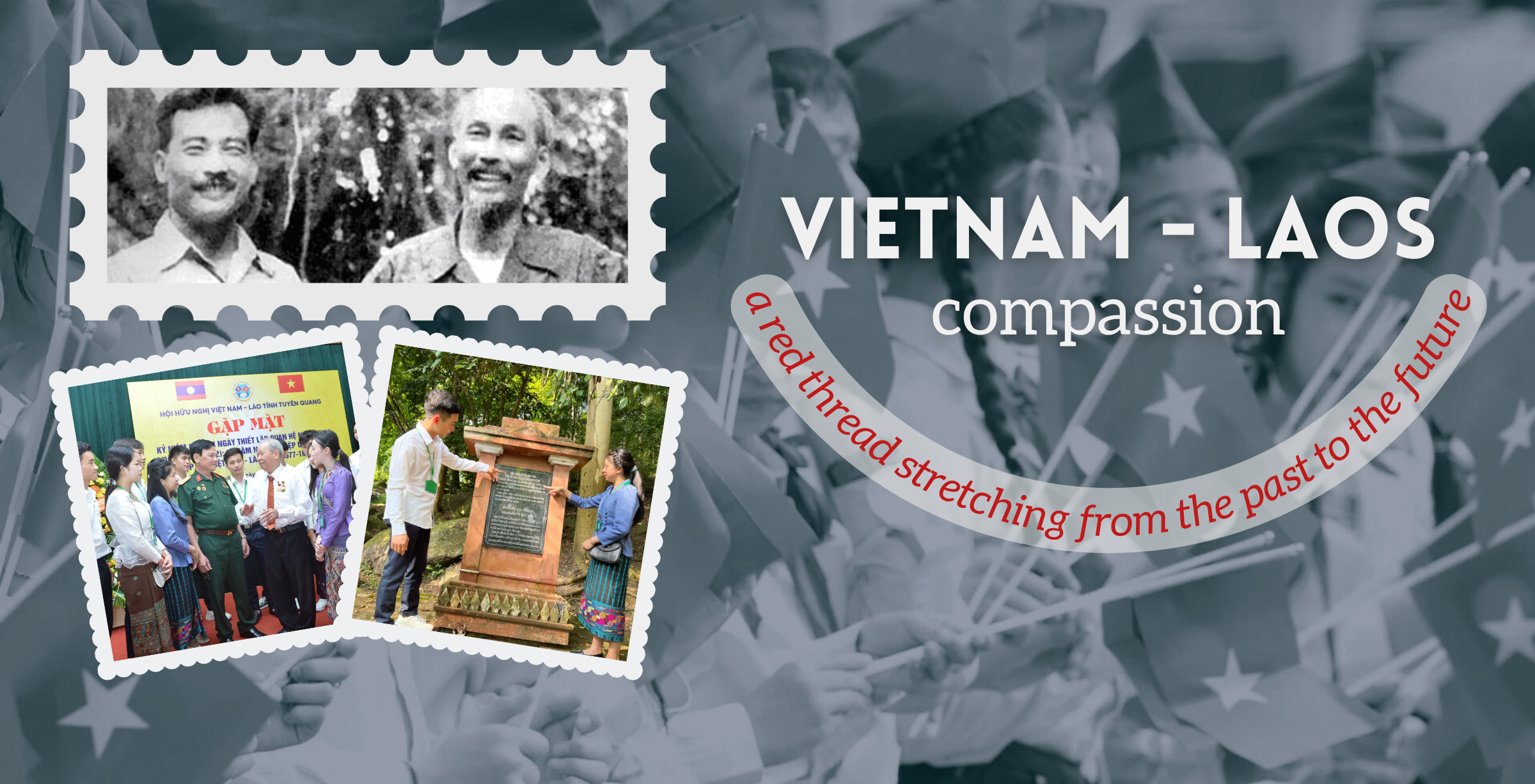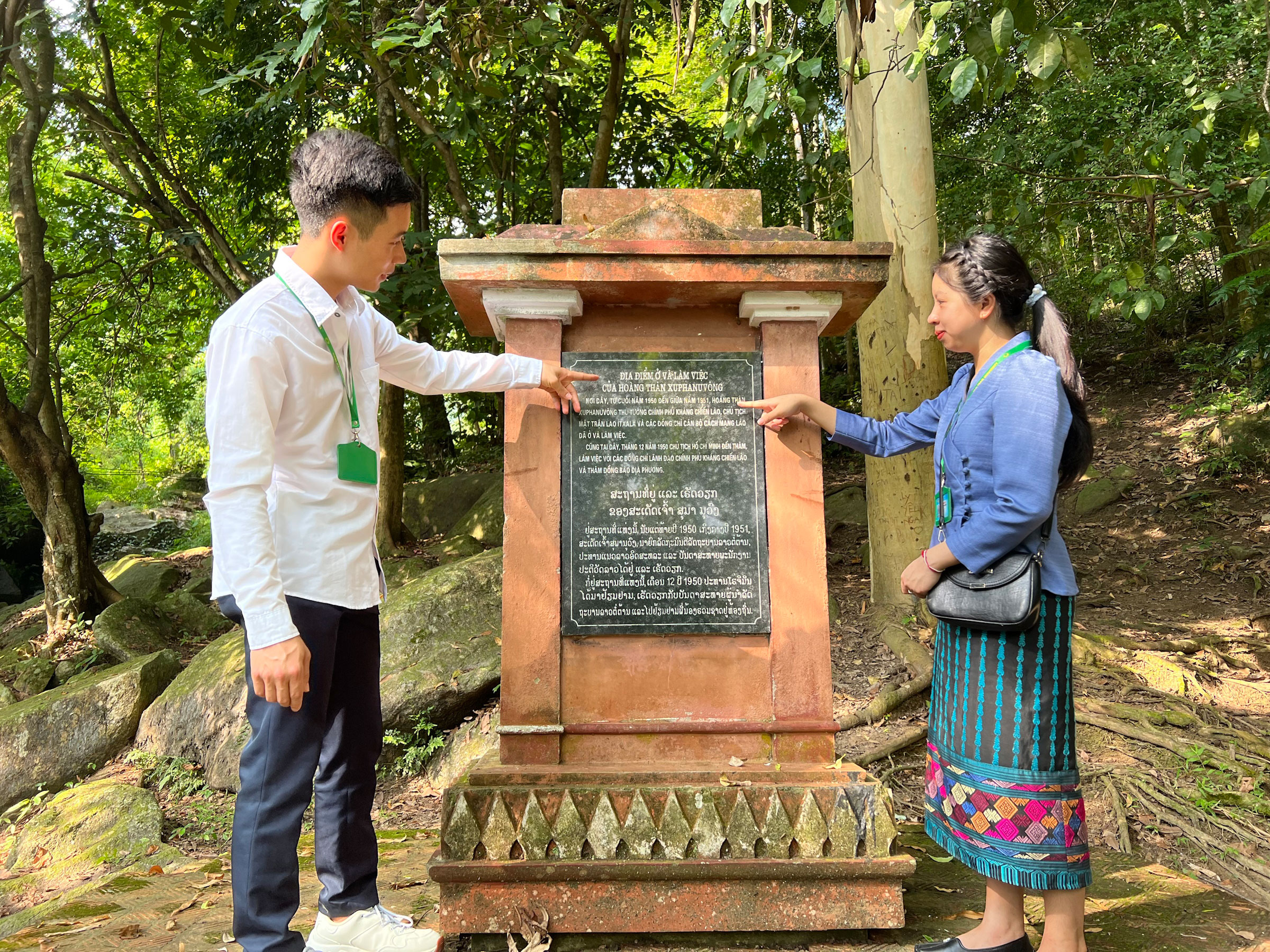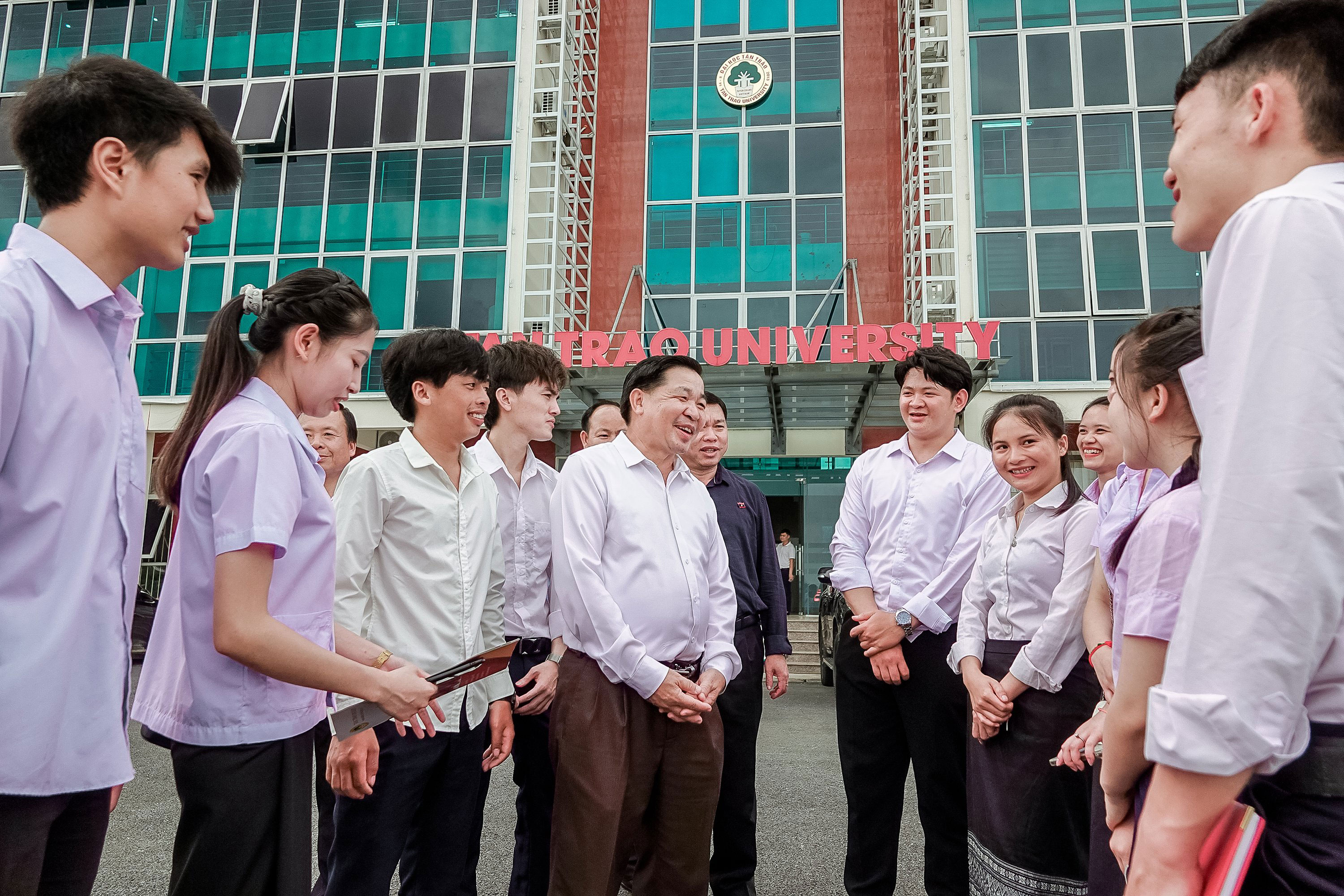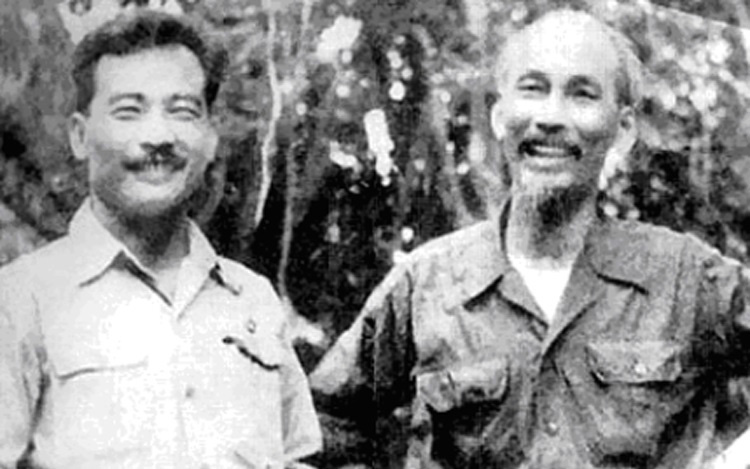


As two close neighbours that are sharing mountains and rivers, the brotherly relationship between the two peoples of Vietnam and Laos has been established and forged in the history of thousands of years of construction and defence of each country. And especially, in the past decades, the time-honoured relationship, the strong emotional attachment between the Vietnamese and Lao people, which the foundation was laid by President Ho Chi Minh and President Kaysone Phomvihane, and fostered by generations of leaders of the two parties, States and peoples, has truly become a rare model and faithful relationship in the history of international relations, an invaluable asset of both nations on the development process of each country.
Part One
Miraculous power leads to great victories
In the history of international relations from the past to present, the special relationship between Vietnam and Laos can be considered an exemplary model of the strong, loyal, transparent and effective connection between two peoples, who have been fighting for independence, freedom and social progress. That relationship has been forged through many harsh trials, becoming a rule of survival, a miraculous power leading to many great victories of Vietnam and Laos, in the process of national liberation, construction and defence.
In the historic April days, mixed in the bright yellow sunlight of early summer, we returned to the revolutionary land of Tuyen Quang - where more than 70 years ago witnessed the meeting of the Lao National Congress (from August 13-15, 1950) to establish the Lao Resistance Government. The Congress emphasised the need to strengthen international solidarity, first of all with Vietnam and Cambodia, to jointly fight against the common enemy of the French colonialists, who invaded and interfered with the US.
This is also the place where the second congress of the Communist Party of Indochina (from February 11-19, 1951 in Vinh Quang Commune, Chiem Hoa District) took place to make new decisions and establish the direction and development of the Vietnamese and Indochinese revolutions. Also here, on March 11, 1951, the People's Alliance Conference of the three Indochinese countries opened, agreeing to establish the Vietnam-Laos-Cambodia people's alliance on the principle of voluntariness, equality, mutual understanding, supporting and respecting each other's sovereignty, fighting together against colonialists and imperialists, gaining real independence for the people of Indochina.

The stele marking the place where Prince Souphanouvong stayed and worked in Tuyen Quang.
The war has gone, and time has faded the scars of fierce days, but in the memory of the veterans and many old people here, the deep love in the fighting of the armies and peoples of Vietnam and Laos has always left its mark.
Sharing at the “Meeting in the homeland of President Souphanouvong”, Le Hai Thanh (born in 1944, Da Ban 1 village, Yen Son District, Tuyen Quang Province) still vividly remembered the autumn morning at the end of August 1950, when Prince Souphanouvong and a delegation of Lao revolutionary leaders moved from Ngoi hamlet to Da Ban 1 village to live and work.
At that time, the road to the village was very difficult. They had to go through the forest, climb the pass, and wade through the stream, there was only one way in and out, through the “waist” with cliffs on either side. This is an ideal location for cover and protection. On both sides of the road, local guerrillas coordinated with revolutionary guard forces to set up two guardhouses to strictly protect them, forbidding strangers to enter. The whole village at that time had only 7 households, less than 60 people.

Xiangkhouang Deputy Governor Sivilay Sengchalon talks with Lao students currently studying at Tan Trao University in Tuyen Quang.
“Each cadre carried a backpack and two bags of rice on both shoulders and followed the pond road to enter my house. At that time, my parents brought jars to put rice in. No one in the neighbourhood knew Lao, but through an interpreter, it was known that Prince Souphanouvong wished local people to provide them with vegetables for daily meals, because everything was in short supply when they arrived. My mother understood that she had mobilised relatives and neighbours to bring bags of vegetables, pumpkins, squash, and papayas to support the revolution. Prince Souphanouvong and the interpreter stayed at my house, and Comrade Kaysone Phomvihane was taken by my father to my son-in-law's house…” - Thanh recalled.
My mother had mobilised relatives and neighbours to bring bags of vegetables, pumpkins, squash, and papayas to support the revolution.

Le Hai Thanh
“Once, seeing my father pounding rice, Souphanouvong also pounded rice with him. Once on Saturday and Sunday afternoons, he invited my father to the mountains to trap grass chickens, pheasants, etc., to bring back food for the family and revolutionary cadres. At that time, because my father worked as a Confucian teacher to worship, many students in neighbouring communes came to study. Afraid of being exposed, my father discussed with Souphanouvong about going to the foot of the mountain to find a secret place to hide the camp. And that was indeed the right place. Even though they moved to the camp, they still sometimes came to visit my family and local people. And People often presented them squash, papaya, and upland vegetables.”
It is difficult to tell all the memories imbued with Vietnamese-Lao sentimentality during the war years. During the resistance war against the French colonialists, the Vietnam-Laos alliance shared a trench and together overcame many hardships to bring the two countries' resistance wars to victory, culminating in the historic victory of Dien Bien Phu in 1954. And in the resistance war against imperialism, the two peoples continued to stand side by side.
Immediately after the 1962 Geneva Agreement on Laos was signed - a victory of strategic significance for the two countries' revolutions, Vietnam and Laos officially established diplomatic relations on September 5, 1962. This is an important milestone, opening a new chapter in the relationship between the two countries, affirming the flesh and blood bond of the two peoples, in the fight for national liberation and reunification.

President Ho Chi Minh and Prince Souphanouvong

President Ho Chi Minh and President Kaysone Phomvihane
The fateful attachment of the two peoples has been concretised by the profound and enormous sharing, both material and spiritual, between the Vietnamese and Lao armies and people during the war years.
The Party, State and people of Vietnam have sent tens of thousands of officers and soldiers to coordinate, help and fight alongside the army and people of Laos. The Lao Party, State and people have also wholeheartedly supported Vietnam to build the “Ho Chi Minh Road.” It is the attachment, and willingness to share and help between armies and peoples of the two countries that became a great force to bring the cause of national liberation and reunification of each country to a complete victory in 1975.
After many years, the memories of the country and the people of Laos are still bright in the memories of the former Vietnamese volunteer soldiers in Laos. With them, each battle coordinated with the cadres and soldiers of Pathet Lao, each shared bowl of rice or potato and cassava is warm and full of loyal love.
During a meeting with Nguyen Van Nghiep, a military expert who used to join the Vietnamese volunteer force to help Laos, we heard him share his profound memories in the “Land of millions of elephants”.
He said he has lived and worked in Laos for a total of 43 years. His whole youth was attached to Laos. During 6 years against the French (1948-1954) in lower Laos, he fought and produced together with the Lao people. In 1954, Vietnamese troops withdrew from Laos, but he stayed in Laos as an expert to help the secret provincial Party Committee Champasak.
The villagers offered me meals, and then sent people to contact the district to support me…

Nguyen Van Nghiep
He said: “At the end of 1955, during the resistance war against the US imperialists, when I went to a meeting of the cadres in Saravan province to return to Champasak, I followed a secret route. On the journey, I had to pass through a village, but the guide did not remember the name of the comrade in that village to contact me to pick me up, so he gave me to an old man from the Laven tribe (Laos). However, he was deaf so he couldn't know what kind of person I was. When I followed him back to the village, people around the village surrounded me. They suspected that I was the enemy’s spy pretending to trick the villagers because there had been such an incident before. I also have no evidence for them to believe me, other than a manual in Vietnamese. I immediately remembered a comrade that I knew, Ms. Bua, and told the villagers. But they said that Ms. Bua had already gathered in Sam Nua, and sent the young man to carry firewood and light a bonfire as big as a campfire. While I didn't know what they were going to do with me, suddenly, among the village youths, a woman ran over and hugged me and called out: “Khamsi (my Lao name), he is my gold nugget.” She said while crying. So, the whole village rushed in around us. The villagers followed the resistance from 1930-1936, so the revolutionary spirit is very resilient. After that, the villagers offered me meals, and then sent people to contact the district to support me…” The memory of the protection of the Lao people has followed the veteran volunteer throughout his life. For Nguyen Van Nghiep, Laos is like his second homeland.

A meeting of the Tuyen Quang Vietnam-Laos Friendship Association to mark the establishment of diplomatic ties between the two countries.
When talking about the deep love and solidarity between Laos and Vietnam, President Ho Chi Minh once advised:
“Vietnam-Laos, our two countries
Love is deeper than Hong Ha, Cuu Long rivers”
Chairman Kaysone Phomvihane also emphasised: “In the history of the world revolution, there have been many shining examples of the international spirit of the proletariat, but nowhere and never has there been a special solidarity and fighting alliance as special, time-honoured and comprehensive like the Laos-Vietnam relationship”.
President Souphanouvong also affirmed: “The friendship between Vietnam and Laos is higher than the mountains, longer than the river, wider than the sea, brighter than the full moon, more fragrant than the most fragrant flower.”
In 2019, Party General Secretary Nguyen Phu Trong chose the Lao People’s Democratic Republic as the first foreign destination for an official friendship visit, after being elected as the President of the Socialist Republic of Vietnam. This continued to affirm the great tradition of friendship and the special vitality and solidarity between the two Parties, States and peoples of Vietnam and Laos.
No matter how the world changes, we are still determined to jointly preserve and promote the special loyal relationship between Vietnam and Laos.

General Secretary Nguyen Phu Trong
Speaking at the 60th anniversary of the establishment of diplomatic relations between Vietnam and Laos (September 5, 1962-2022), Party General Secretary Nguyen Phu Trong shared: “We always wish to cooperate and support Laos with the spirit of “helping our friends is helping yourself”, considering this a strategic task. We wish to join the Party, State and people of Laos to constantly foster political trust, promote security and defence cooperation, strengthen the connection between the two economies, and constantly improve the quality of education-training cooperation, together building an independent, self-reliant and deeply integrated economy; together, we will strive to make cooperation achievements more and more commensurate with the stature of the special relationship between Vietnam and Laos, as well as the expectations of the leaders and people of the two countries.”
The General Secretary affirmed: “No matter how the world changes, we are still determined to jointly preserve and promote the special loyal relationship between Vietnam and Laos, following the wishes of President Kaysone Phomvihane: “Mountains may wear out, rivers may dry up, but the Vietnam-Laos friendship will forever be more sustainable than mountains and rivers…”
In 2021, during the official friendship visit to Vietnam, also the first foreign visit as Party General Secretary and President of the Lao People's Democratic Republic for the 2021-2026 term, looking back on the tradition of relations between the two Parties, States and peoples of Vietnam and Laos, Comrade Thongloun Sisoulith affirmed: “During the period of fierce fighting together, tens of thousands of Vietnamese volunteers left their families behind, together carrying guns and backpacks, marched across the majestic Truong Son mountain range to Laos, to perform their international obligations with the army and people of Laos, to fight against the old-style and neo-colonialism. It can be said that on most of the battlefields in Laos, Lao - Vietnamese soldiers fought together, and shared the same trench, contributing to making the Lao revolutionary forces step by step gain complete victory in the uprising to regain power and the birth of the Lao People's Democratic Republic on December 2, 1975” and “the hardships, resilience and sacrifices of cadres and soldiers of the two countries have left a precious legacy in the past, that is, Laos and Vietnam are independent and free with intact territorial integrity; people of Laos and Vietnam can live peacefully in their lands. This is also the wish of President Ho Chi Minh, President Kaysone Phomvihane and President Souphanouvong.”
Vietnam-Laos exchange activities in Tuyen Quang